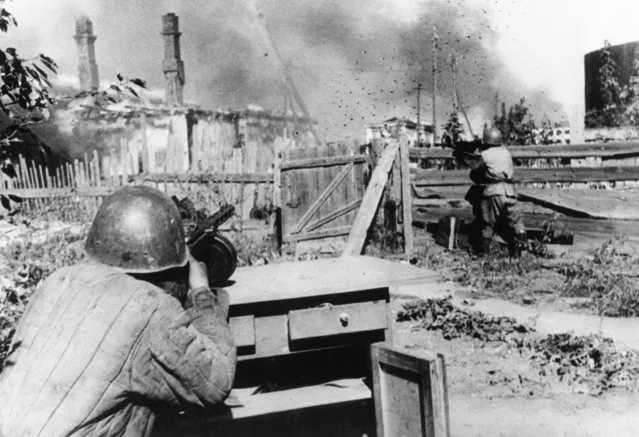
Standing in the backyard of an abandoned house in the outskirts of the besieged city of Leningrad, a rifleman of the Red Army aims and fires his machine gun at German positions, on December 16, 1942. (Photo by AP Photo)
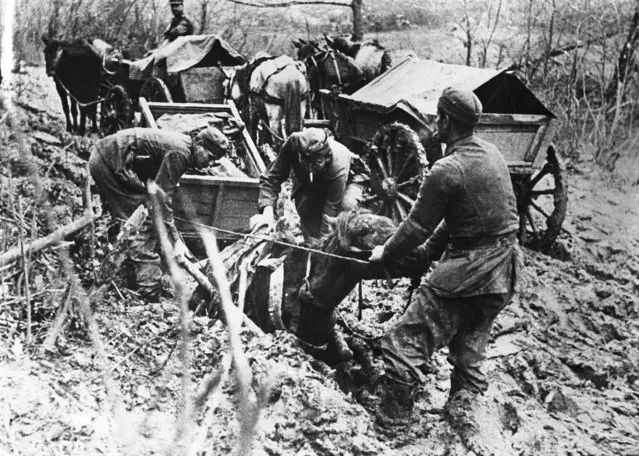
Taken in the North West Calcasus area, it shows men of a German transport unit attempting to extricate one of their horses from the Russian mud in which it was sunk up to its neck, somewhere in Russia on December 20, 1942. (Photo by AP Photo)
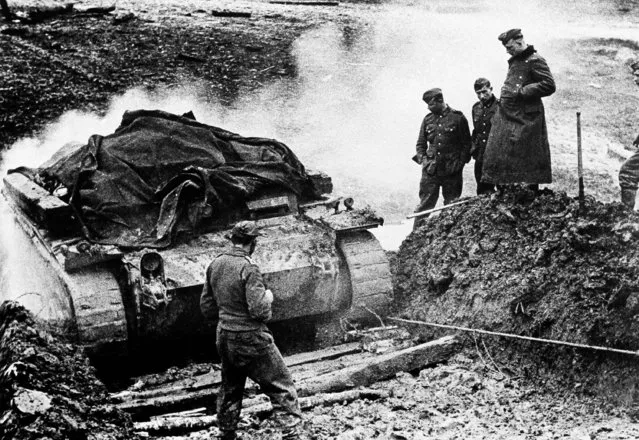
This may be one of the reasons why the German advance into Russia failed to keep up according to schedule. Everywhere the roads were nothing but a sea of mud. This January 6, 1942 photograph shows one of the problems and this one was multiplyed thousands of times, the army faces in the period of invasion. (Photo by AP Photo)
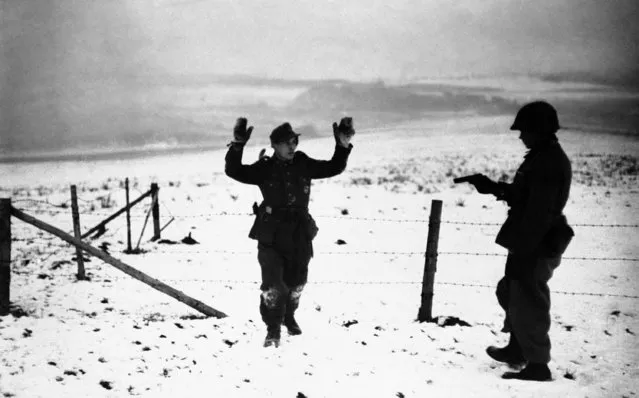
A German surrenders during the Third Army drive in Bastogne, Luxembourg, on January 12, 1945, to relieve U.S. troops encircled there. (Photo by AP Photo)
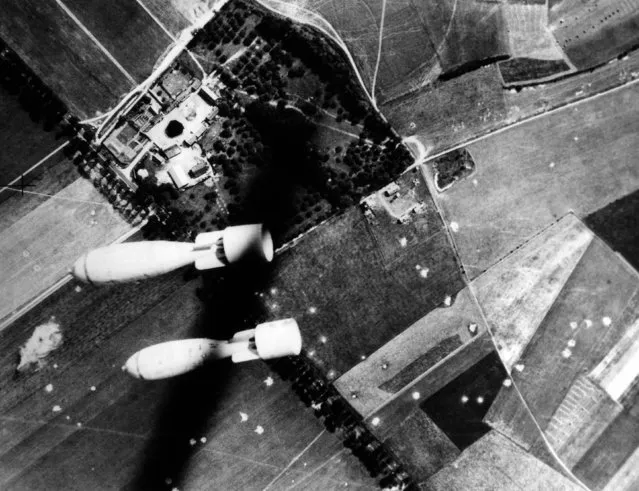
Twin missiles of destruction let loose by the Royal Air Force during a successful raid on Abbeville, France, aerodrome on July 20, 1940, held by Germans. Numerous bomb craters may be seen over the area. (Photo by AP Photo)
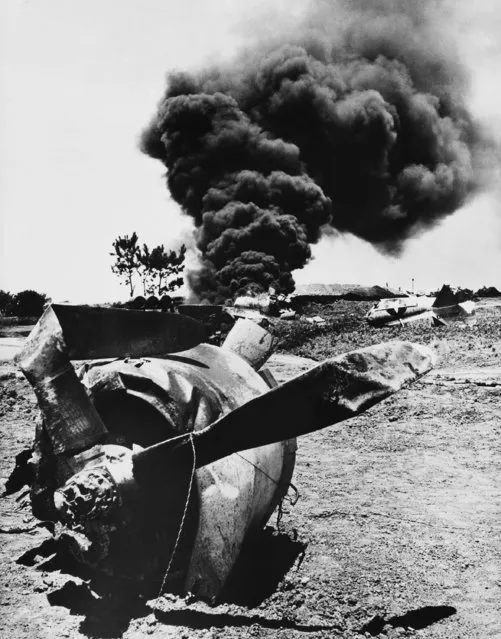
Broken and burning fiercely, P-47 fighter crashed during takeoff in the Ryukyus on July 21, 1945 for a strike against the Japanese homeland. The engine in the foreground was thrown far away from the main wreckage in background. The pilot escaped with minor injuries. (Photo by AP Photo)
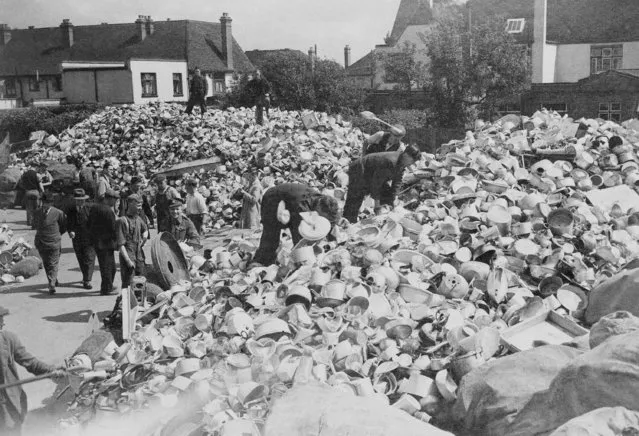
These huge piles of aluminum pots and pans were contributed by English housewives to be melted down into metal for British fighting planes. Workers sorting the material, July 29, 1940. The offerings were in response to Lord Beaverbrook's appeal to the women of England. (Photo by AP Photo)
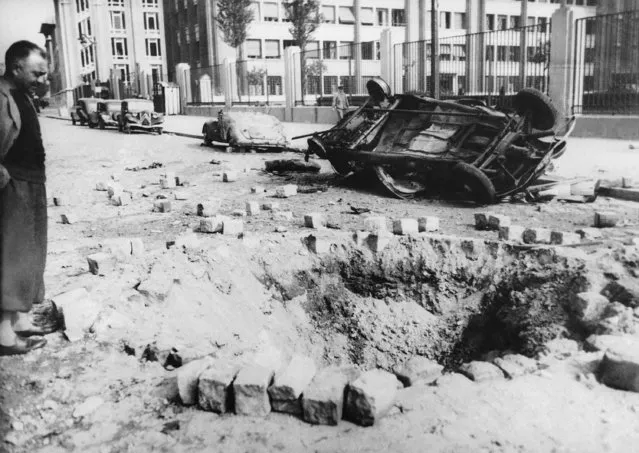
An upside down automobile hit by a bomb, and the hole in Paris street caused by the explosion during bombing of the city shown June 3, 1940. (Photo by AP Photo)

General Maurice Gamelin, General Officer commanding the French Armies, is on a four day visit to England. He went to the staff college at Minley and is seen inspecting an anti-tank gun at Aldershot, on June 7, 1939. (Photo by AP Photo)
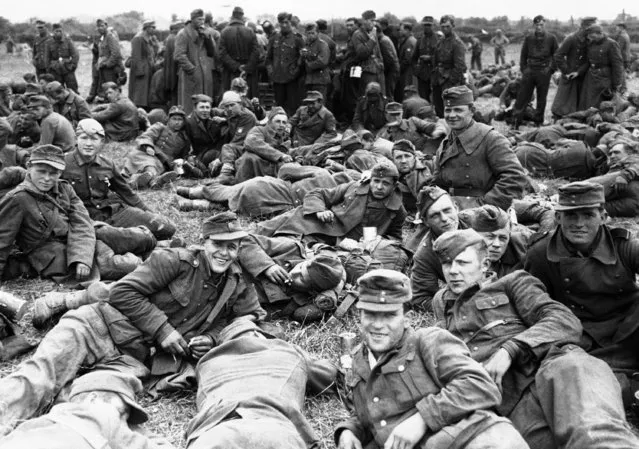
A large group of German prisoners on a beachhead in Normandy, France on June 13, 1944, awaiting transportation to England. (Photo by AP Photo)
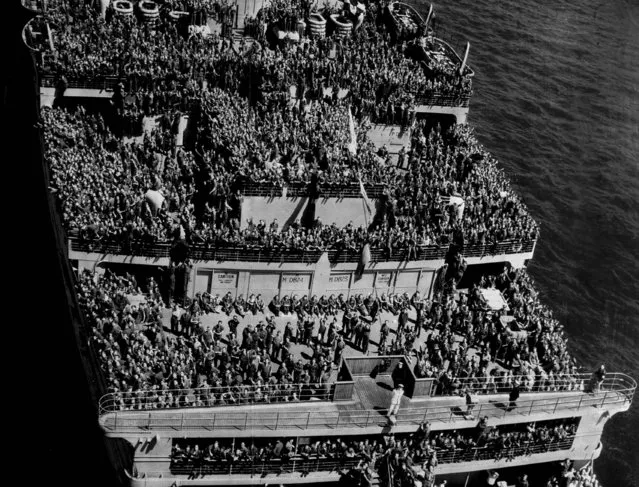
In this image provided by the U.S. Coast Guard, U.S. troops returning from Europe pack the decks of the British luxury liner-turned-troopship HMS Queen Mary as she steams into New York Harbor June 20, 1945 with some 14,000 troops aboard. This was the ship's first voyage to America since V-E Day. (Photo by AP Photo/U.S. Coast Guard)
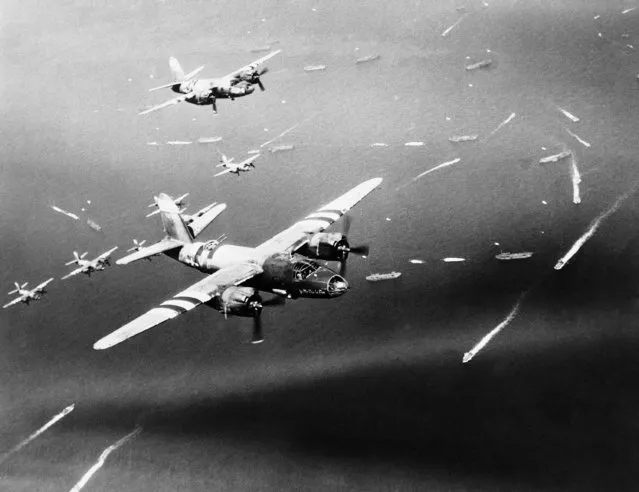
Marauders of the 9th Air Force bombardment group, fly over units of the Allied fleet as they approach landfall on the French coast, on June 21, 1944. Marauder groups such as these, fly constantly in close support of our advancing group forces. Their targets are enemy gun positions, bridges, railroad and highway junctions, convoys and troops concentrations. (Photo by AP Photo)
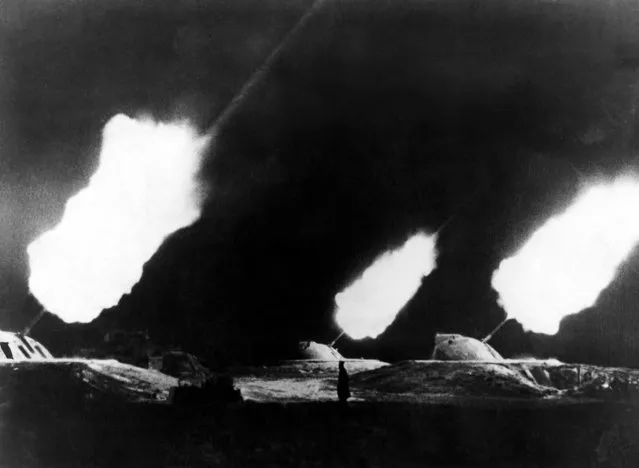
A German Anti Aircraft Battery lit up by the firing guns during a night attack by enemy plane, somewhere on the Atlantic coast of France, June 22, 1943. (Photo by AP Photo)
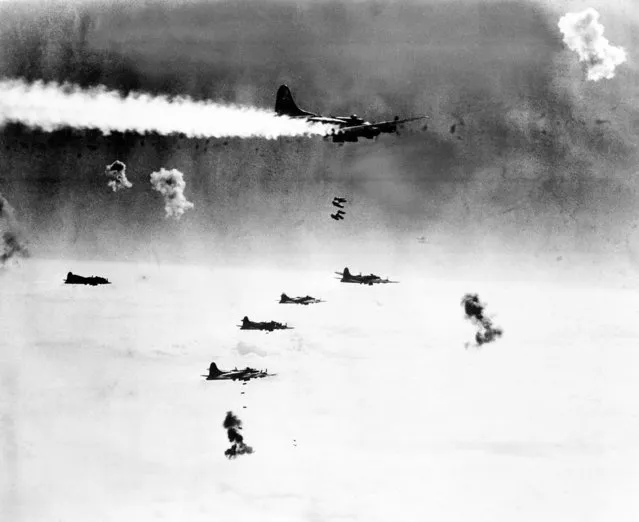
A B-17 Flying Fortress remains in formation as smoke trails from its wing that is on fire as its load of bombs drop toward targets in Berlin, Germany, June 30, 1944. (Photo by AP Photo)
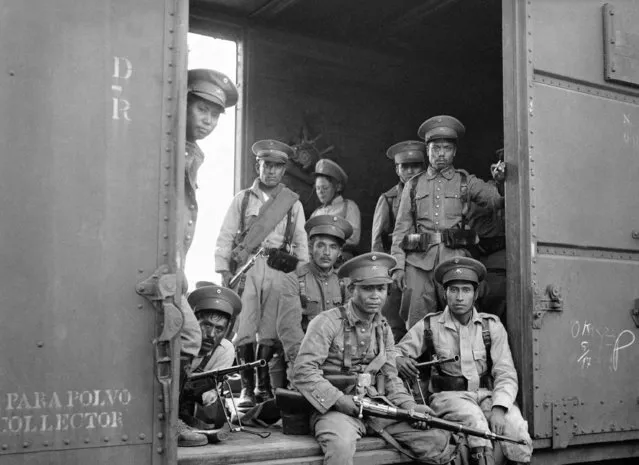
Curious natives watch as the troop train bearing government soldiers prepare to leave their roost atop the box cars to chase the rebel chief, Gen. Saturnino Cedillo and his soldiers into the hills in San Luis Potosi on May 25, 1938. (Photo by AP Photo)
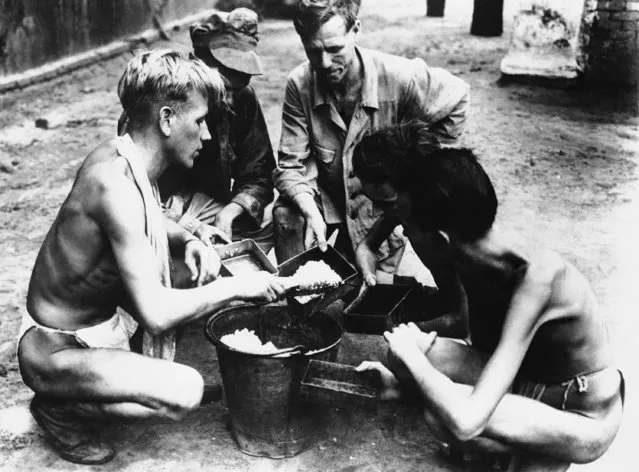
In Tangoon Prison, the staple, the only diet was rice. In their habitual costume, allied prisoners of war have their last meal before being taken to base camp and freedom on May 26, 1945. Their sparse clothing, all they had. (Photo by AP Photo)
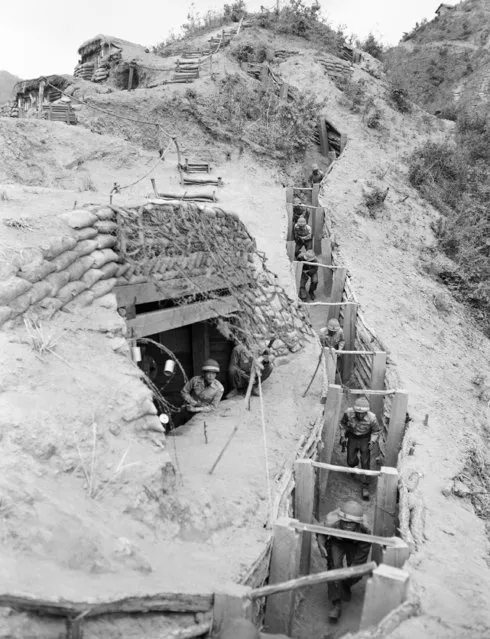
Soldiers of the 9th Republic of Korea (ROK) division move through well-built trenches on a dusty hill overlooking the east central front in Korea, May 26, 1957. Sandbagged bunkers reinforce the position. One of many defense points in which the ROK defenders, with no chance of evacuation, are dug in for a last ditch fight should the communists again move southward. Some United Nations commanders have termed the ROK positions superior to the more vulnerable U.S. defenses. (Photo by AP Photo/Sweers)
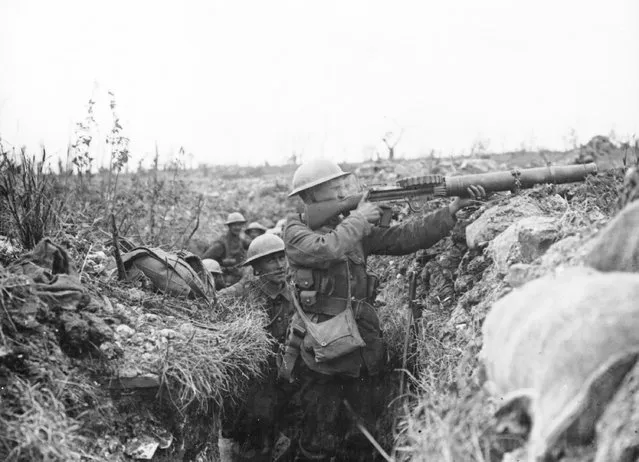
A Lewis gunner on the firing step of a trench, near Ovillers on the Somme France during 1916. The Lewis Gun, with its distinctive barrel cooling shroud and top-mounted drum magazine, was the British Army's most widely used machine gun during World War One. Each Lewis Gun required a team of two gunners, one to fire and one to carry ammunition and reload. All of the members of an infantry platoon would be trained in the use of the Lewis Gun so that they could take over if the usual gunners were killed or wounded. In the Battle of the Somme some 1.6 million soldiers of both sides died. (Photo by UK MoD/Atlas Photo Archive)

A tank fleet behind the British front. France, 1918. (Photo by Photo12/UIG/Getty Images)
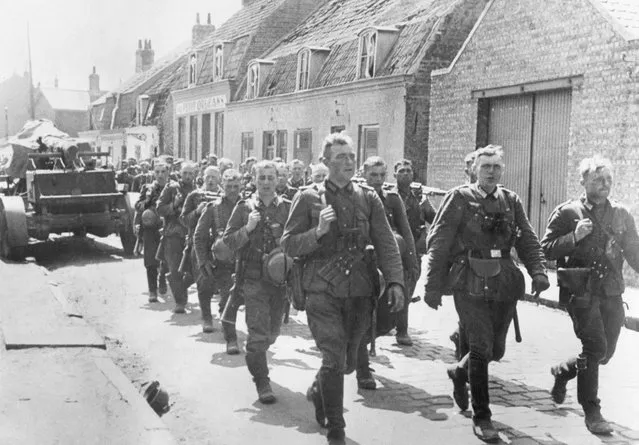
German infantry entering Dunkirk.about July 4,.1940. (Photo by Ullstein Bild/Ullstein Bild via Getty Images)
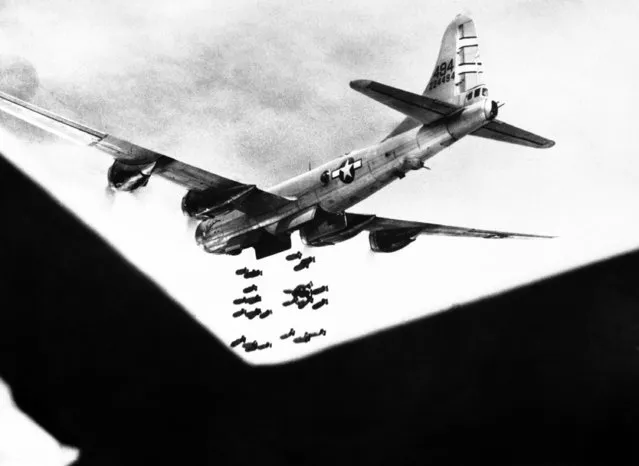
A Super-Fortress lets loose its load of high explosive bombs on Formosa, southern-most island of Japan, in raids which preceded the Tokyo attacks, on November 30, 1944. (Photo by AP Photo)
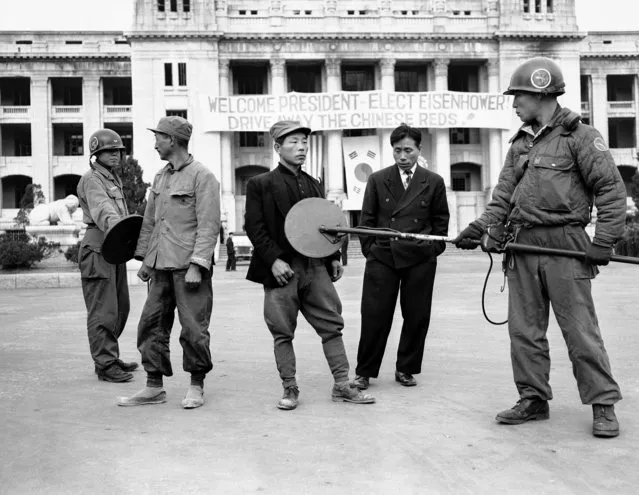
ROK soldiers search Korean workers as they enter the Capitol building grounds in Seoul, South Korea, November 30, 1952. All those entering to work are given this going over as U.S. President-elect Eisenhower is expected to visit. (Photo by George Sweers/AP Photo)
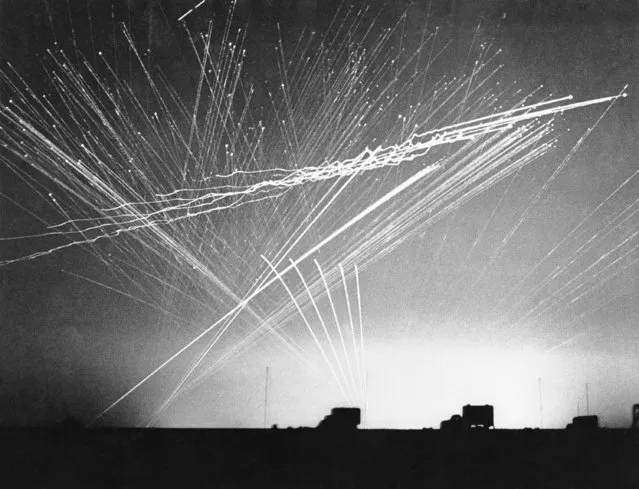
Fire from anti-aircraft batteries made this pattern of light as enemy raiders attacked an RAF landing field somewhere in the Western Desert, October 3, 1942. One enemy aircraft was shot down on this North African raid. (Photo by AP Photo)
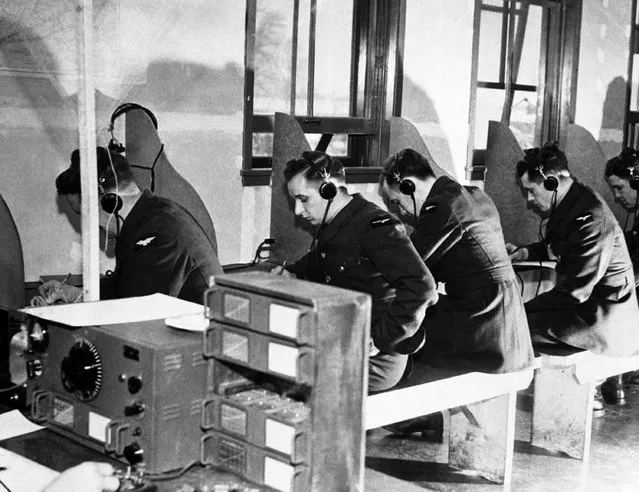
Pilots training at the elementary flying school at Ontario, Canada, on October 14, 1941, receiving wireless instructions. (Photo by AP Photo)
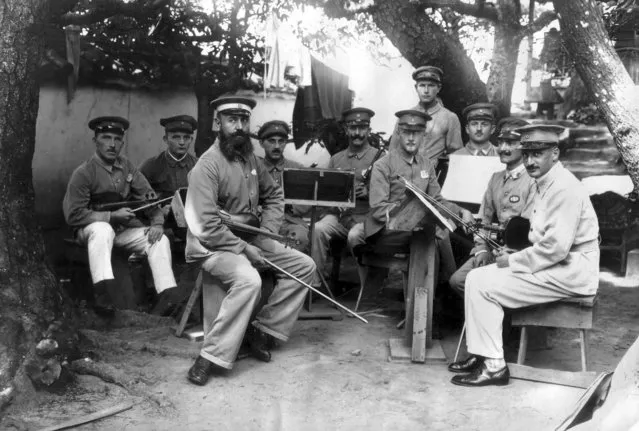
Members of a German POW orchestra pose at the Marugame camp in Kagawa Prefecture, Japan, in the mid-1910s. (Photo by Kyodo News)
16 Jan 2018 06:25:00,
post received
0 comments
